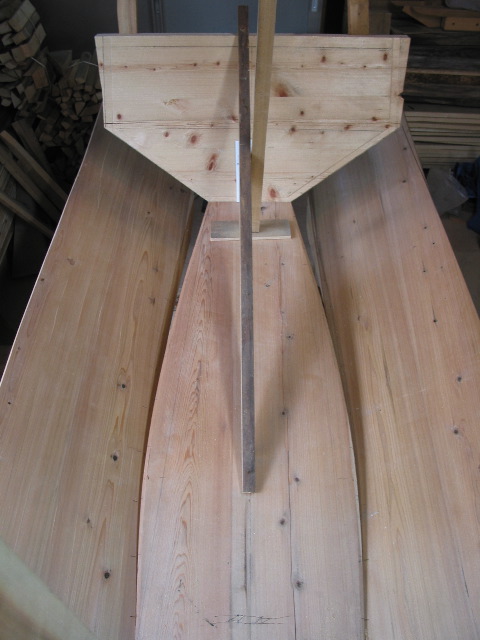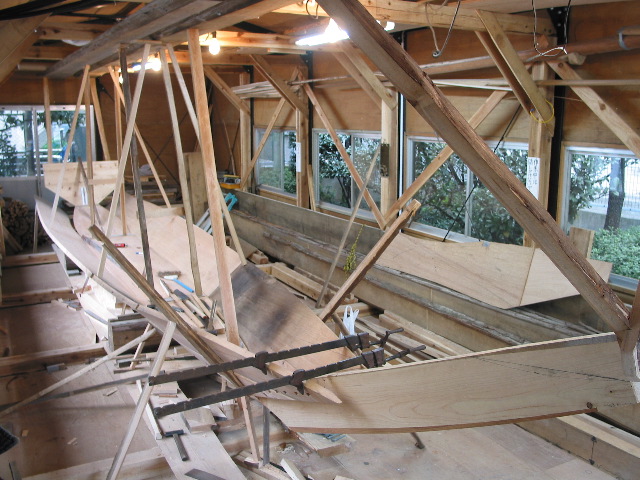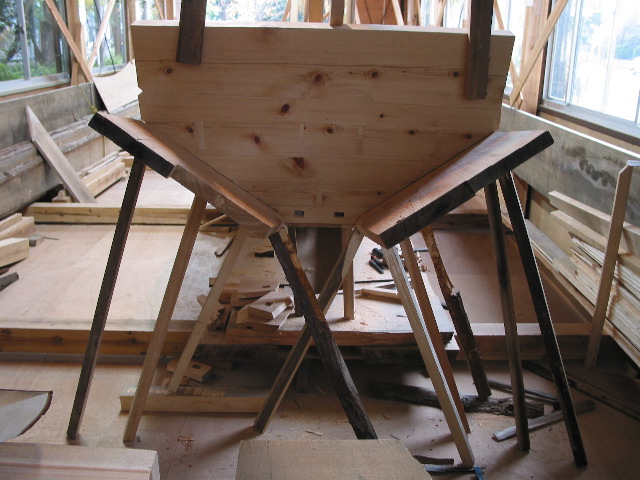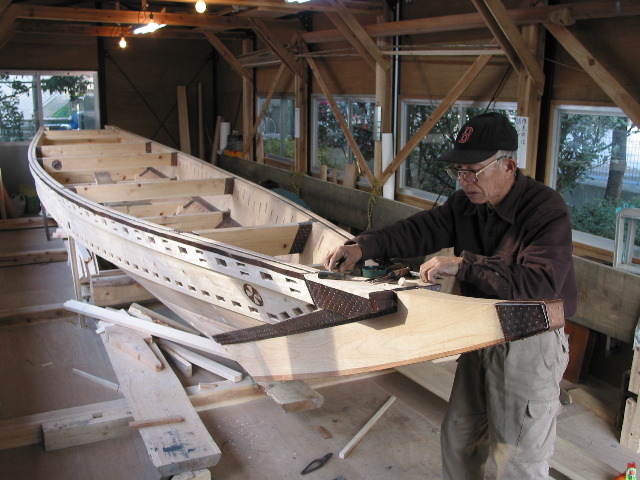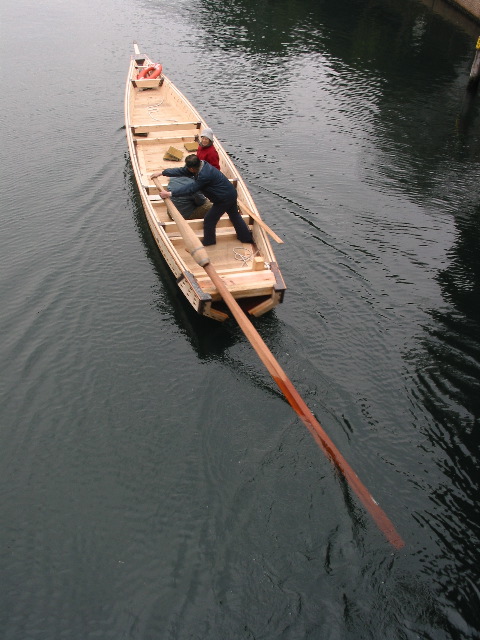Chokkibune
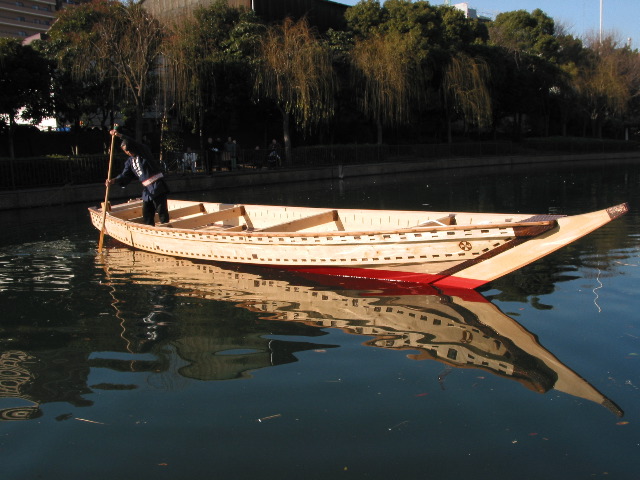
The chokkibune was launched on January 17th, 2003 in a traditional ceremony conducted by a Shinto priest. In keeping with a local tradition, the boat was paddled in a circle three times for good luck. This boat was one of two that I built with Mr. Kazuyoshi Fujiwara from September, 2002 through January, 2003. This research project was underwritten by the Freeman Foundation, and also included a third boat that I built later in 2003 with Mr. Seizo Ando.
Chokkibune were famous in the Edo era (1603-1867) as fast water taxis in use on the canal system of Edo (Tokyo). The boats enjoy a romantic status in Japan and the name "chokki" means the tusk of a boar, referring to long raking stem. To design the boat, Mr. Fujiwara used photographs of these boats from the late 1800s and his own family's boat building ratios, which he drew at 1/10th scale on a plank of wood. Traditional woodworkers in Japan rarely work with paper; all drawings are done on wood. For boat builders the plank drawing is often rudimentary and used in combination with a set of ratios for fixed dimensions. These ratios are rarely written down and often regarded as secrets known only to the boat builder.
The circular mark near the bow represents a child's pinwheel and was used by Fujiwara's grandfather who built this type of boat in the late 1800s and early 1900s.
The chokkibune is now owned by Koto-ward, Tokyo and is operated by the volunteer group Wasen Tomo No Kai (Friends of Traditional Japanese boats) which uses it to teach the public traditional rowing.
Throughout Japan boats were traditionally powered by kai (paddles) or ro (sculling oars). Only in the far north of the country does one see western-like oars (known as kurumagai, literally, "wheeled paddle") The ro originally comes from China, where it is known as the yuloh. In larger communities like Tokyo, boat builders and ro-craftsmen were separate tradesmen. Mr. Fujiwara, at age 60, apprenticed himself to the last ro-craftsman in Tokyo when that man retired.
Proportions and balance of the ro are critical, but it is a powerful method of propulsion. A single rower can easily move a thirty foot boat weighing over a ton. Wasen Tomo No Kai meets weekly and also participates in special events throughout the year. If you are traveling to Tokyo I can provide directions to their boathouse.

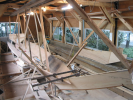

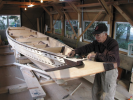

For more information about the Japanese sculling oar see my Research and Publications page.

